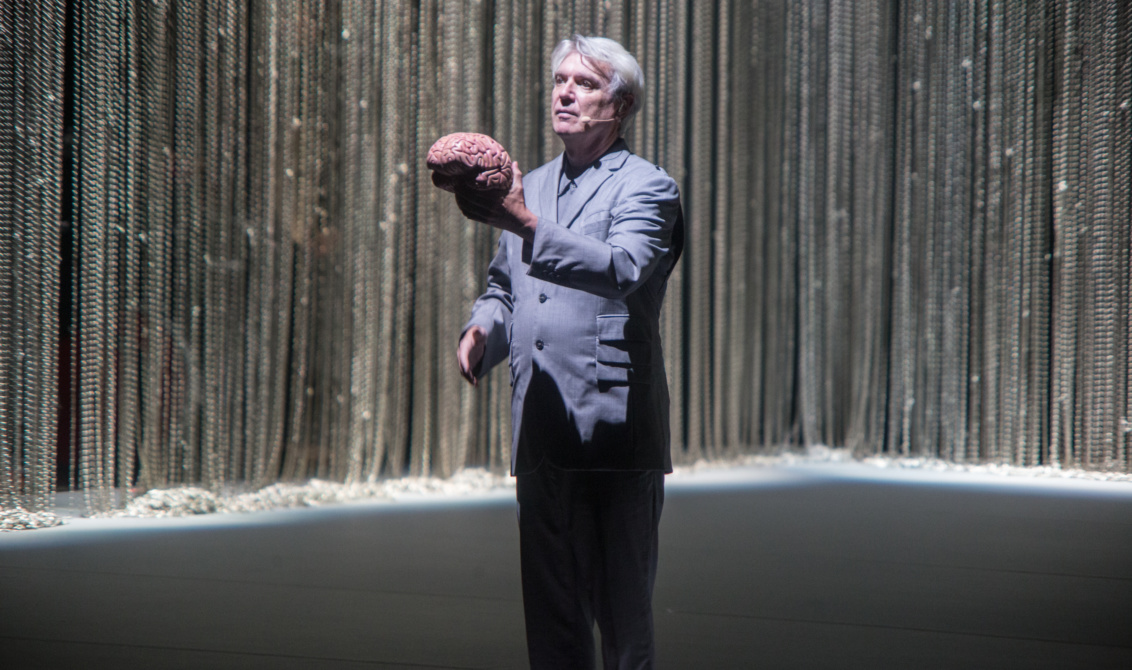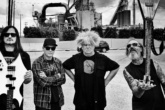May 11, 2018
Three shimmering walls frame the stage at Ovens Auditorium. Up close, you would see these are thousands of ordinary metal chains strung from the rafters. As the show begins, they are backlit, forming a band of white light around a space completely devoid of drum-sets, mic stands, or amplifiers. In the center of this emptiness sits David Byrne, at a desk, holding a model of the human brain. Beginning with the last track off his new album, “Here,” he points to the brain: “Here is a region that is seldom used / Here is a region of abundant details…” Here is the aesthetic of a RISD drop-out: geometric, minimalist, and cerebral, showing all that you can do when you limit the variables.
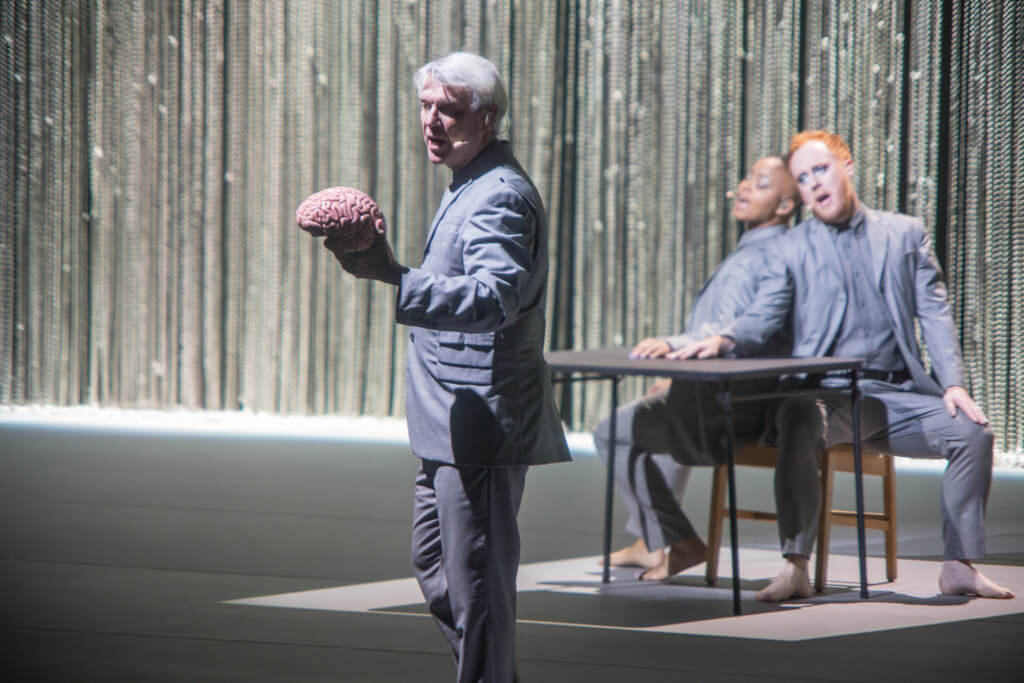
It’s a calm opening to an explosive night. Byrne’s band emerges from the wall of chains, a dozen or so musicians that only he could assemble. Like Byrne, all are dressed in slate-grey suits and no shoes. With instruments strapped to their shoulders, this barefoot marching band is made for movement. Byrne plays the occasional guitar but mostly keeps his hands free, because there’s lot of air to be chopped. A pair of background vocalists spin and flitter around him, always ready with those signature harmonies.
Aside from one synth, one bass, and one lead guitar, the rest of the band are percussionists playing everything from single snares and toms to bongos and timbales. Even the Brazilian berimbau makes an appearance. There could be no better live accompaniment to Byrne’s catalogue than this pulsing layer of tropical and western percussion—not just for the syncopated beats he’s known for, but for his role as an ambassador and champion of world music. The compilations he curated on his Luaka Bop label exposed a generation of North Americans like myself to the universe of Brazilian music. All of this history gets synthesized tonight in a raging party of international music fusion.
When Byrne announced his American Utopia tour, in support of his “first solo album in 14 years,” he said it would be an even mix of new material and older hits. Critics received American Utopia with cool ambivalence, put off by the insistently weird lyrics and at-times clunky mix of sounds. Never mind that this was David Byrne, always at home in ambiguity; the deadpan goofiness of American Utopia came off as almost overreaching, a dangerous flirtation with self-parody.
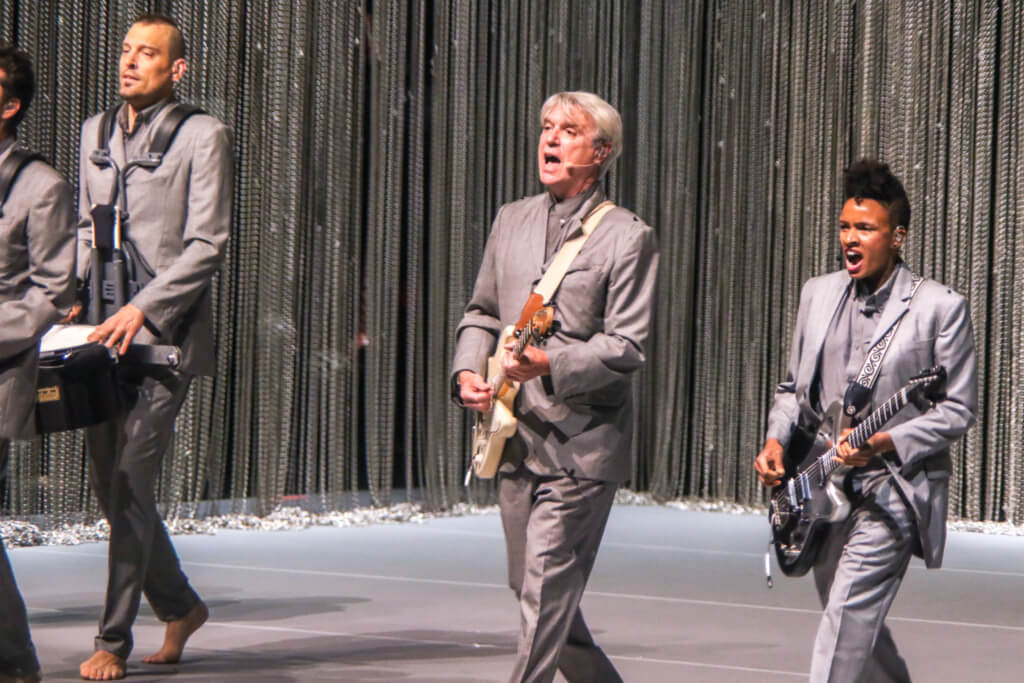
It’s not a perfect album. Its density requires multiple listens. But seeing the scale, ambition, and delivery of this show is enough to sweep away any shred of doubt in Byrne’s continued prowess. At 65, he performs with astonishing dexterity. Never a misstep in two hours of choreography. His nasally voice glides and soars the same is at it ever has. Even after a guitar malfunction, he nails the second half of a solo, hands off the guitar, dashes across the stage, and lands on his next cue with timing so perfect the crowd howls.
This entire production is choreographed by Annie-B Parson, the director who worked with Byrne on his musical Here Lies Love. She has the band utilize the space in an endless variety of ways, with lots of Byrne-ian dance moves: the free-form sign language, the relaxed calisthenics, the occasional dad-jig.
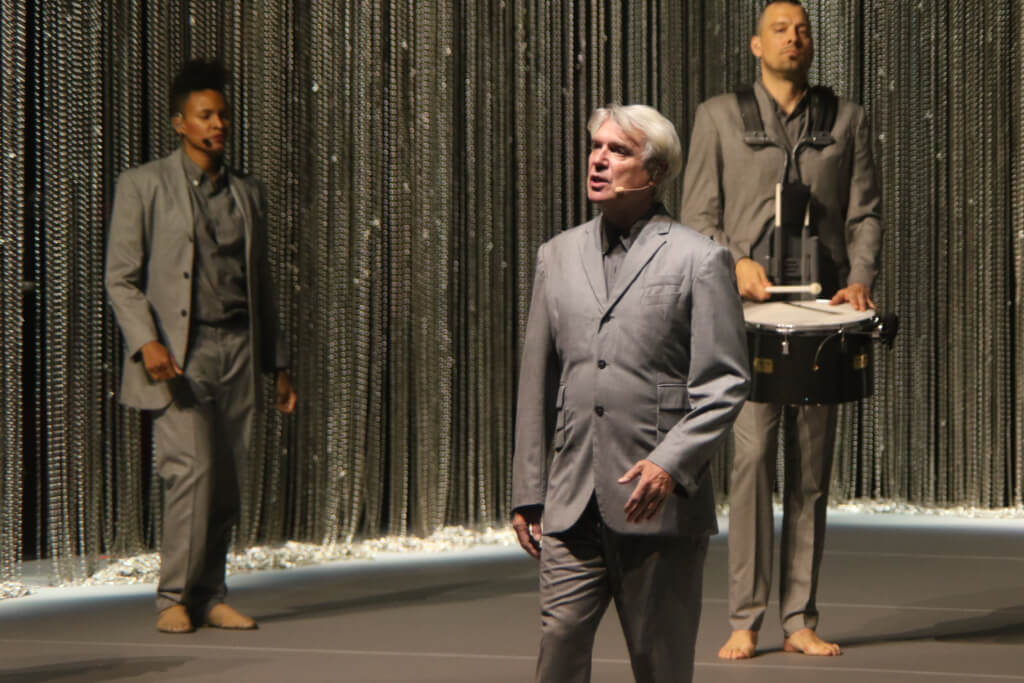
The set list includes most of the tracks from American Utopia, which usually serve as meditative interludes between the more high-energy hits. A gorgeous example is “Bullet,” a procession in shadows around a single light bulb. We get plenty Talking Heads favorites, like the beloved “This Must Be The Place (Naive Melody).” A spotlight follows Byrne as he stumbles wildly across the stage for “Once In A Lifetime.” The grand finale comes when takes an acoustic guitar and picks out the opening notes to “Burnin Down the House,” which is as killer as you’d expect. Returning for an encore, Byrne pulls out an obscure disco-themed tribute to a former first lady of the Philippines, one of many random selections thrown in throughout the evening.
But it is the second encore that turns out to be tonight’s most unforgettable moment. First Byrne introduces Steve Scales, a percussionist from the Stop Making Sense tour, who joins the band to play congas. “This last song was written by Janelle Monáe and it is performed with her blessing,” Byrne says. “It was written in 2015, and sadly it is just as relevant today.” “HELL YOU TALMBOUT” is a protest song based on traditional African drum circles; a vocalist leads a call-and-response, demanding you repeat names we should all know, names like Trayvon Martin, Eric Garner, Sandra Bland, Michael Brown, and so many more.
It’s safe to say that this was not the send-off the audience was expecting. Most seem too stunned for the engagement their idol asks of them now. A long litany of tragedy and outrage, the song builds an emotional current that in the end leaves you shattered and reeling. After a two-hour party, it is pretty damn somber when the house lights came up. You just can’t underestimate the humanity, nor the conviction, nor the unpredictability of David Byrne. I hope he never stops making sense.
Check out the remaining 2018 tour dates for David Byrne.
Read next:
